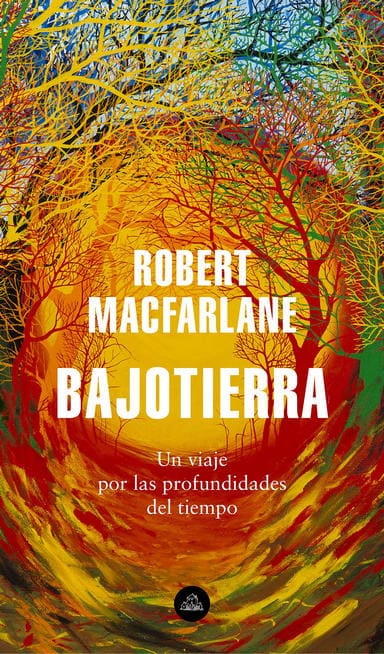This firm can no longer find new ways to recommend Robert MacFarlane’s books. A quiet success in the British literary world with Landmarks almost a decade ago, he has since built stories around increasingly fascinating places—both the stories and the sites themselves. He is not a travel writer, though he travels and recounts his journeys; nor is he a nature writer, though each of his books is an exploration of physical space. His genre is a thing unto itself: in English, they call it places writing—very practical, as always. One might say he is a writer of the human bond with the physical world, encompassing emotional, linguistic, prosaic, religious, and scientific connections. Terrasyngraphy, perhaps?
Whatever the case, reading him is like walking alongside a thoughtful, cultured, and gentle explorer. The landscape gradually fills with stories—stories that move and astonish.
In Underland, he speaks of deep time while actually narrating the reality beneath our feet. Descending into grottos, caves, cenotes, mines, sunken observatories, and burial mounds is to travel through the timelines of Gaia and humanity. More than a writer, the wanderer is almost always accompanied by local Virgils who know the place intimately. Listening to them speak with Robert, learning about their lives, is yet another pleasure of the reading experience.
But above all, there is wonder: Bronze Age burial chambers hidden on the coast of Finland, hinting at humanity’s effort to communicate—perhaps even with us. Superlative nuclear waste bunkers on the American plains, whose existence and lethality we seek to warn generations so distant from us (thousands of years) that we must invent a semiotic system in case none of our languages survive. The catacombs of Paris, reimagined by the people, executing a project of topology and inhabitation that Walter Benjamin could only have dreamed of. The fungal networks beneath forests through which trees communicate with one another. The underground rivers, with life so different from our own. Geological time, of such superhuman dimensions that we find no other way to anchor ourselves to these temporal magnitudes than by burying ourselves in them: the burial mounds are sketches of stone vessels bound for eternity.
One finishes his books with the sensation of having traveled in the truest sense—the kind of journey that, when someone asks you about it, you merely respond with, it was nice, averting your gaze as if hoarding treasures in your chest that you would never want to squander by speaking of them. This, says your heart, is within my depths. It is underland.


